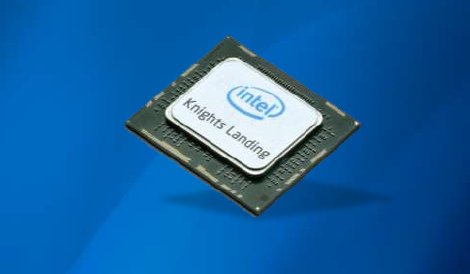Intel Corp. is planning to bring to market a stand-alone Xeon Phi CPU that can replace the combination of Xeon CPU and Xeon Phi coprocessor widely used in high performance computing (HPC) systems today.
The company did not say when it was planning to bring the product – which will use the 14nm process technology – to market when it announced it at this week's SC13 supercomputing conference in Denver.
Raj Hazra, VP of Intel's data center group and general manager of its technical computing group, said the concept of making Phi a host processor will do away with the notion of having to off-load code across a PCIe or some other limited-capacity connection.
One of the CPU's most important features will be in-package memory, which means memory will be part of the CPU package, as opposed to a separate card on the motherboard. Applications will be able to use the memory resource as part of the overall memory space, as cache or as a hybrid of the two, Hazra explained.
It will utilize a familiar programming model for using processor cores and the memory, which will be connected with a high-bandwidth link. “This is a fundamental advancement on the path to many-core and exascale,” Hazra said.
Earlier this month AMD, one of Intel's major rivals in the HPC space, announced its answer to the problem of offloading compute jobs from CPU to an accelerator. Its answer is called Heterogeneous System Architecture (HSA).
In many supercomputers, the coprocessor role is played by GPUs (Graphics Processing Units), since they are very good at parallel processing. Using AMD Opteron CPUs in tandem with GPUs by NVIDIA have been a common way to build this kind of architecture.
AMD's HSA allows both the CPU and the accelerator to share memory space and work as a single piece of silicon, as opposed to having CPU schedule compute jobs for the GPU and slowing down performance as a result.
Intel's announcement does not mean it is going to stop developing Xeon Phi coprocessors. Knights Landing (Intel's codename for Phi) will be available in two flavors, Radoslaw Walczyk, a company spokesman, wrote in an email. “There are many customers who may just want to upgrade their PCIe coprocessor without [changing] the entire platform,” he said.
Intel is working with Fujitsu on silicon photonics technology that will potentially enable Ethernet and PCIe traffic to travel over fiber optic links instead of electrical wires. Applied in the context of coprocessing, the technology will enable Intel to install a lot more Phi coprocessors per square inch of server. With silicon photonics, a coprocessor can sit away from the CPU but act and perform as if it was right next to it on the motherboard.
New open source distributions
In addition to shining a light on the upcoming Phi CPUs, Intel used SC13 to announce a distribution of Apache Hadoop geared toward HPC applications and two new distributions of Lustre, the open source file system popular in the HPC world.
The HPC version of Intel's Hadoop distribution is simply its previously released Hadoop distribution combined with its own Lustre distro. The combined solution enables users to run Hadoop MapReduce jobs directly on Lustre storage clusters without making any changes.
The two new editions of the Intel Lustre distribution are Enterprise and Cloud. The Enterprise edition is the one used with Hadoop, and the Cloud edition is available through Amazon Web Services to customers who need to burst HPC workloads into cloud when their on-premise infrastructure doesn't cut it.

